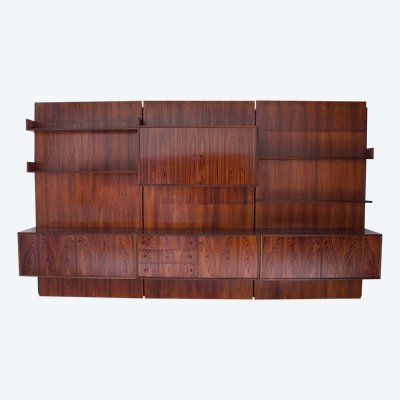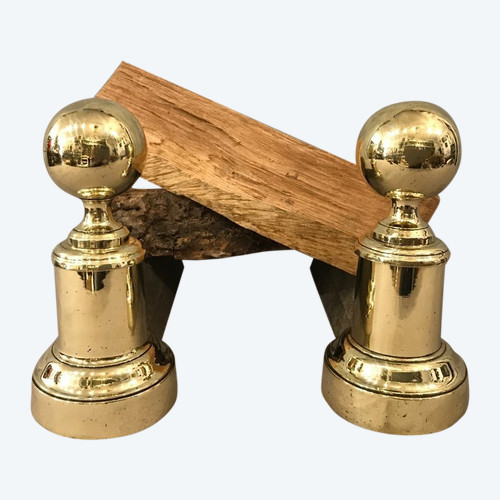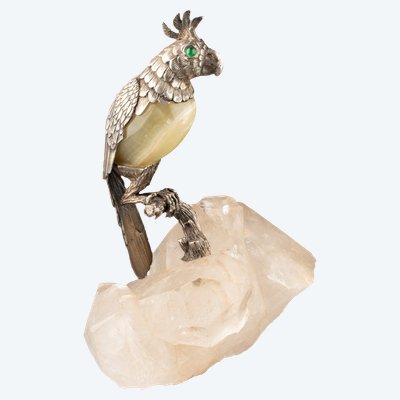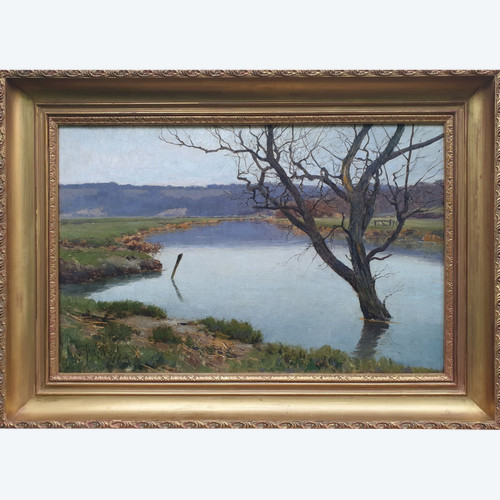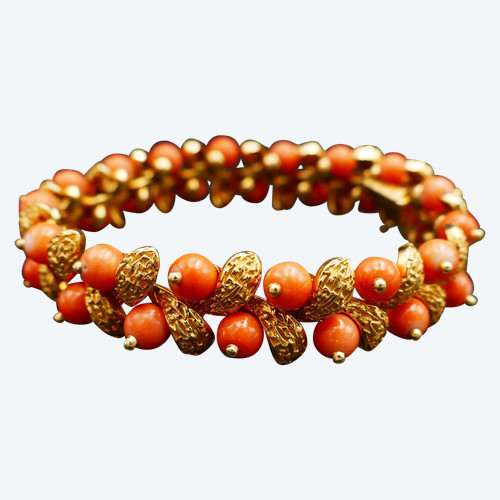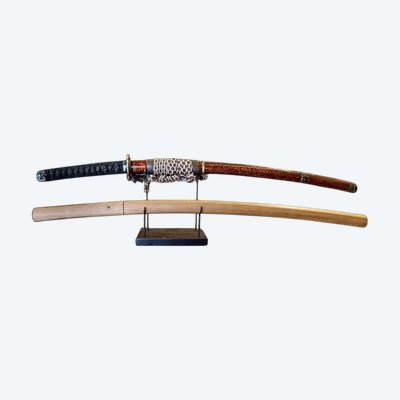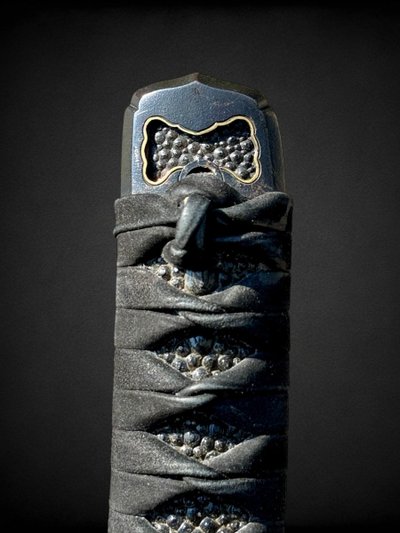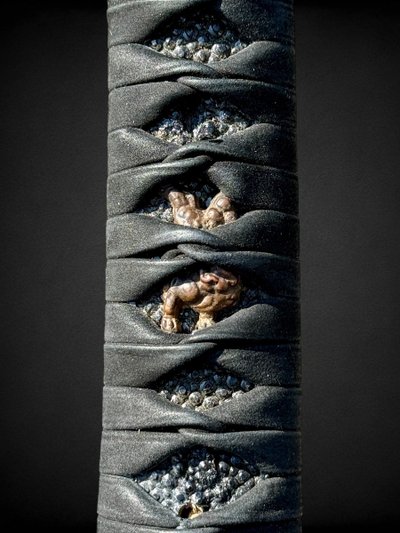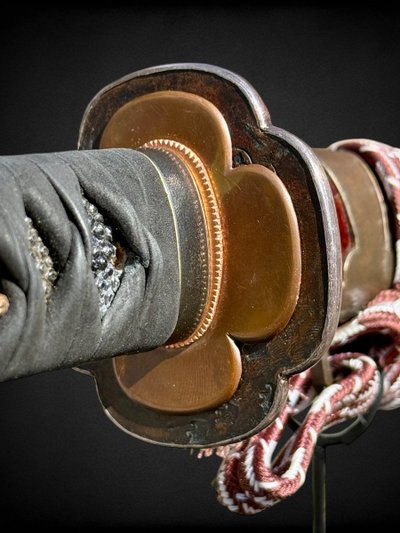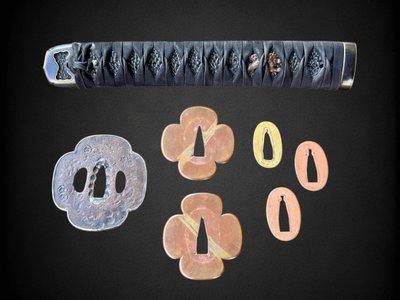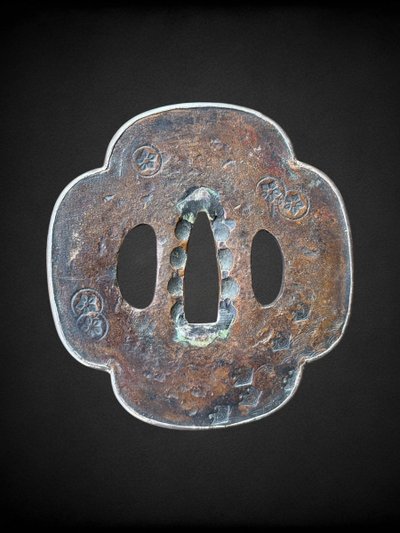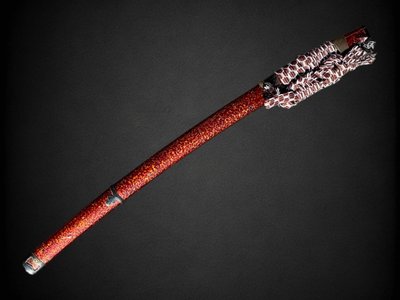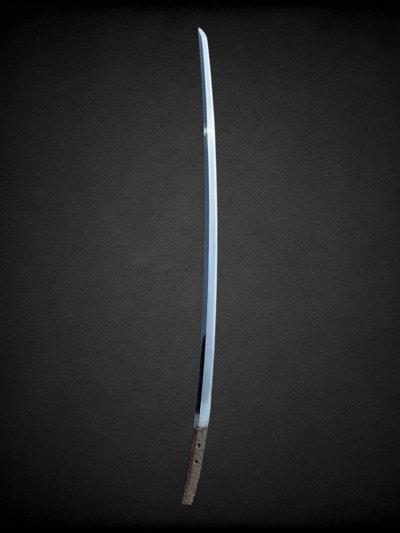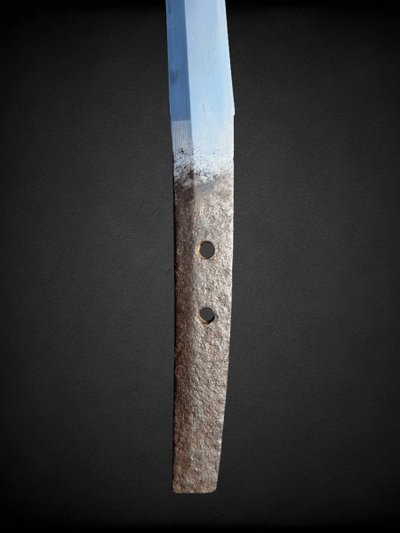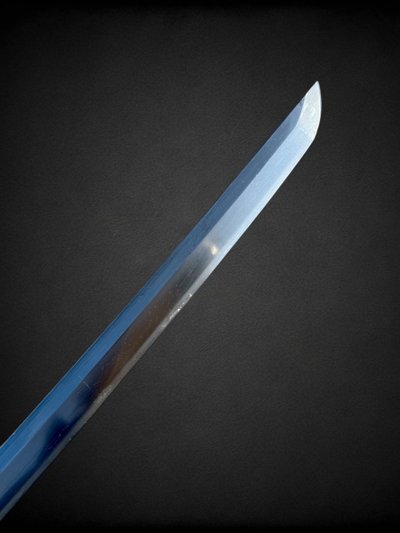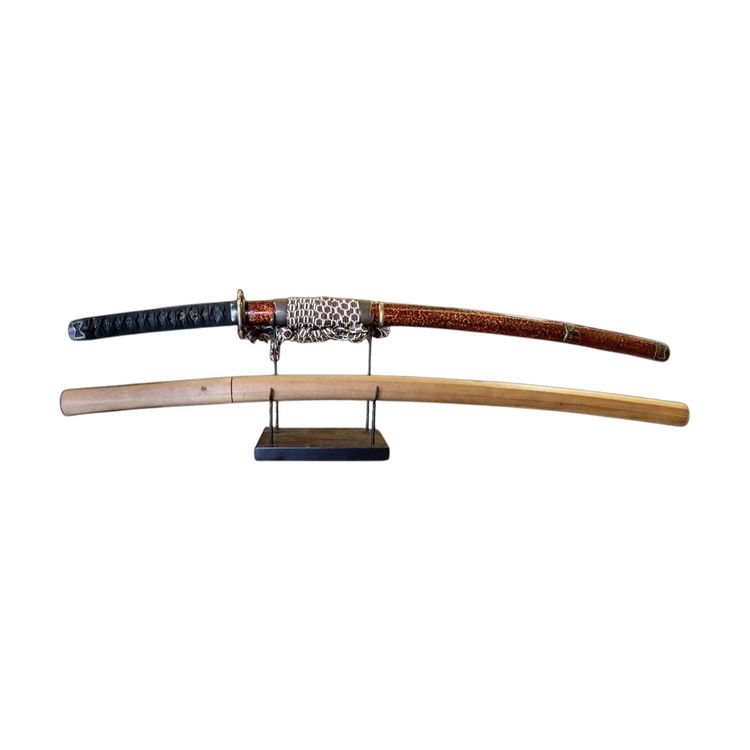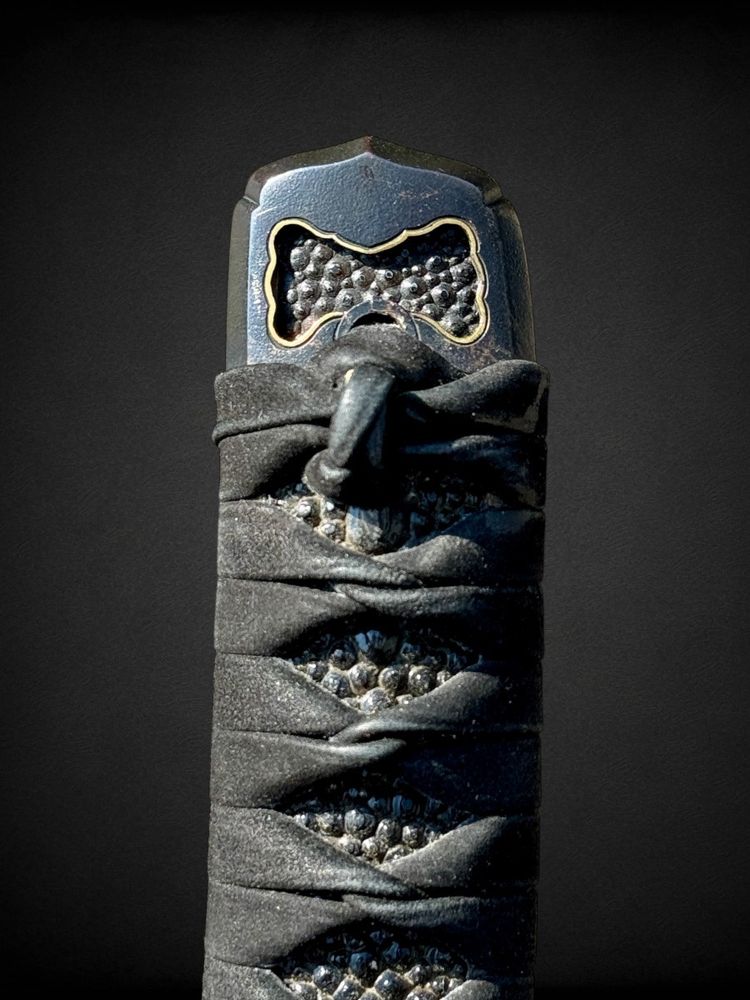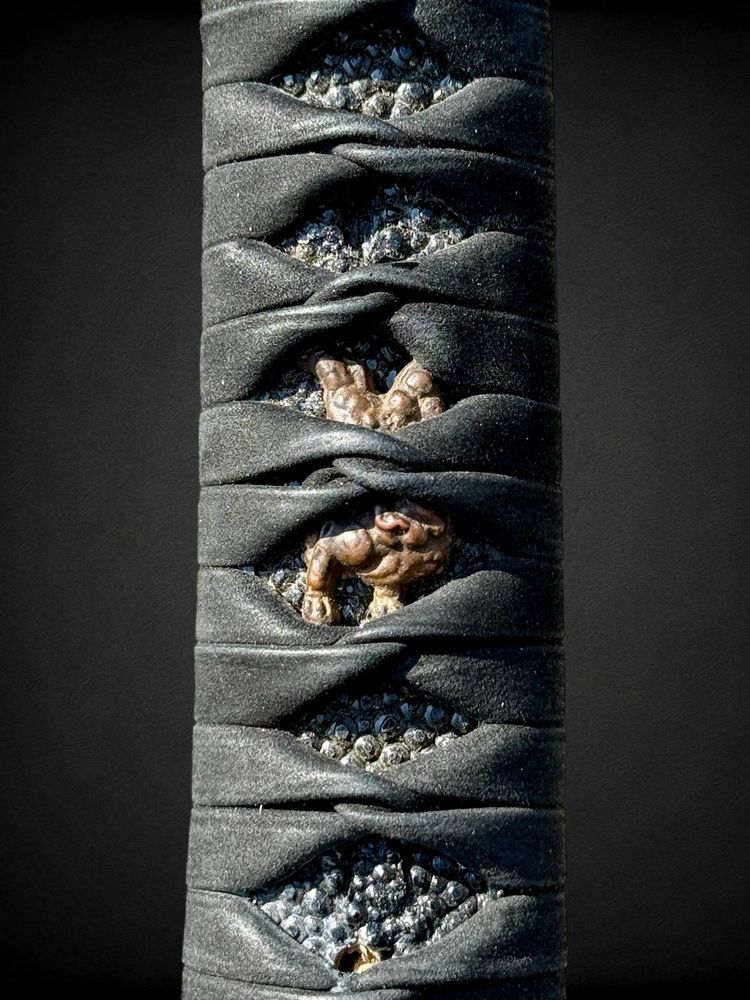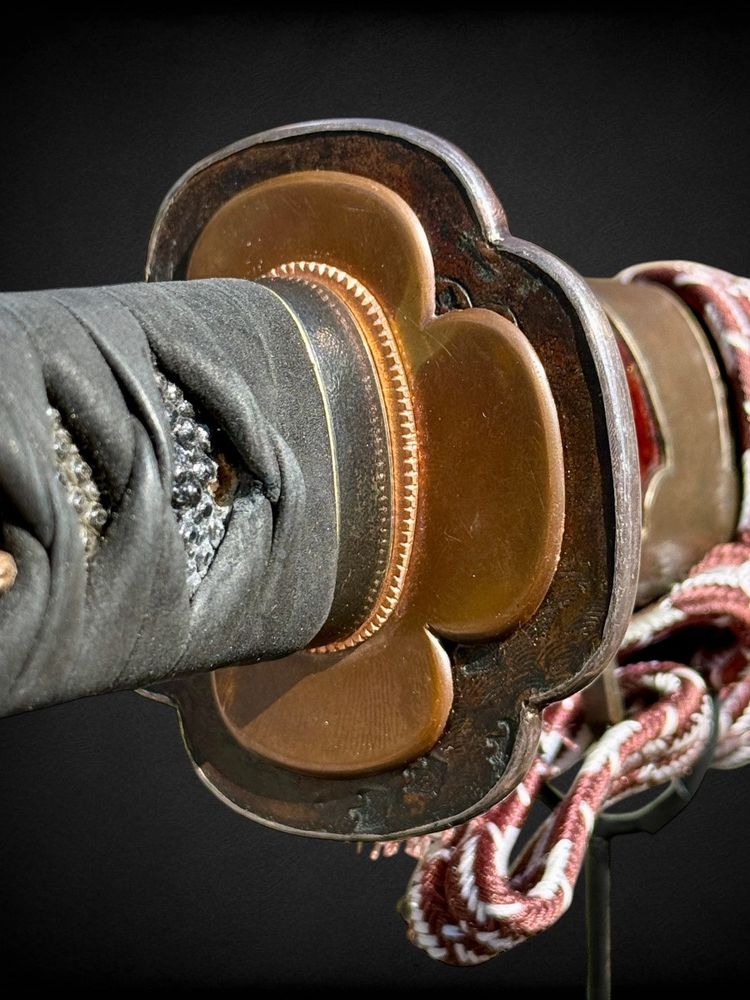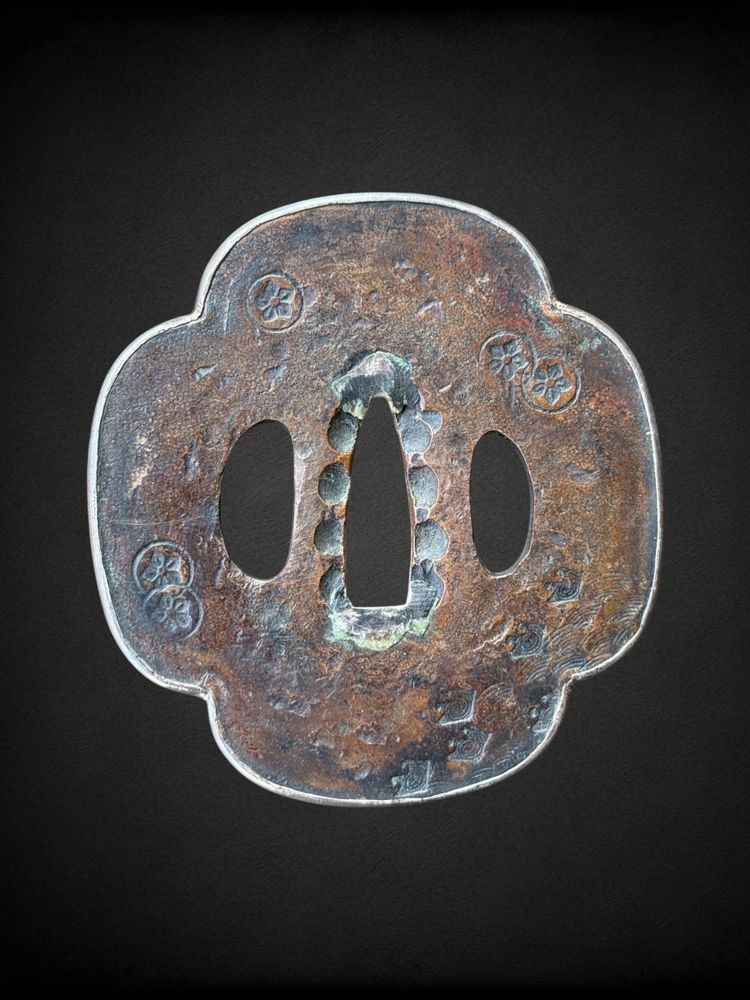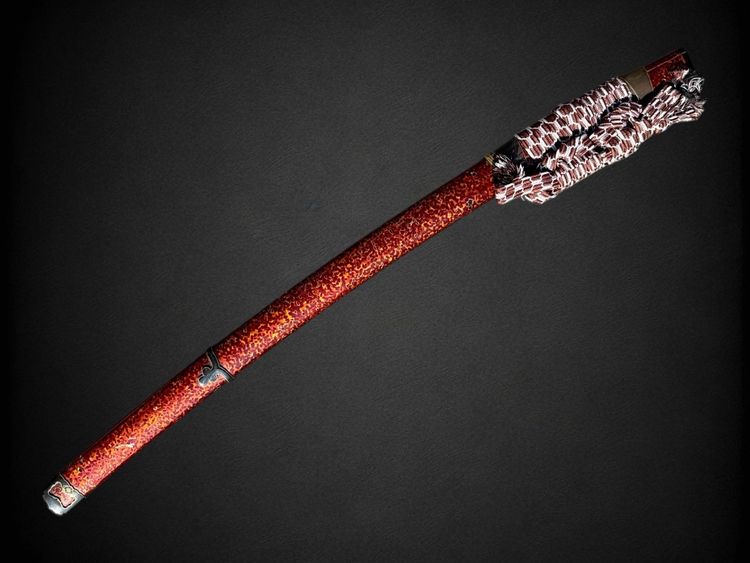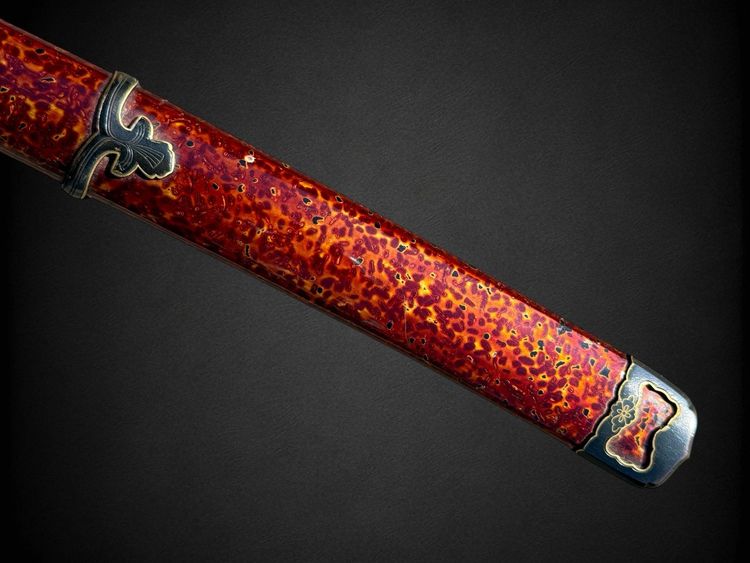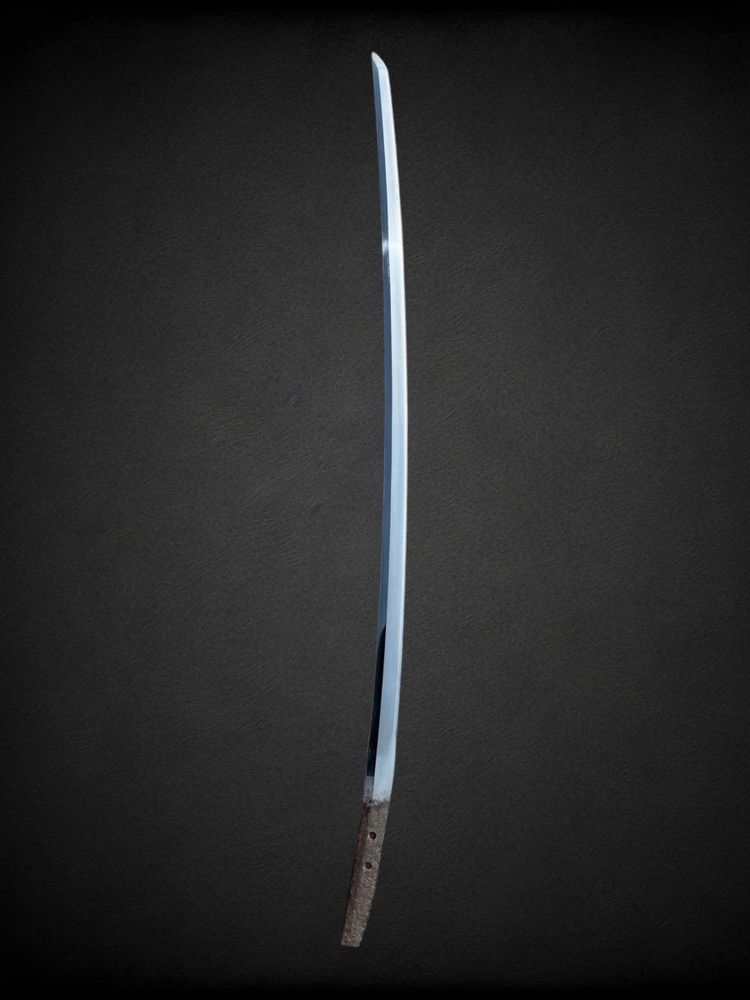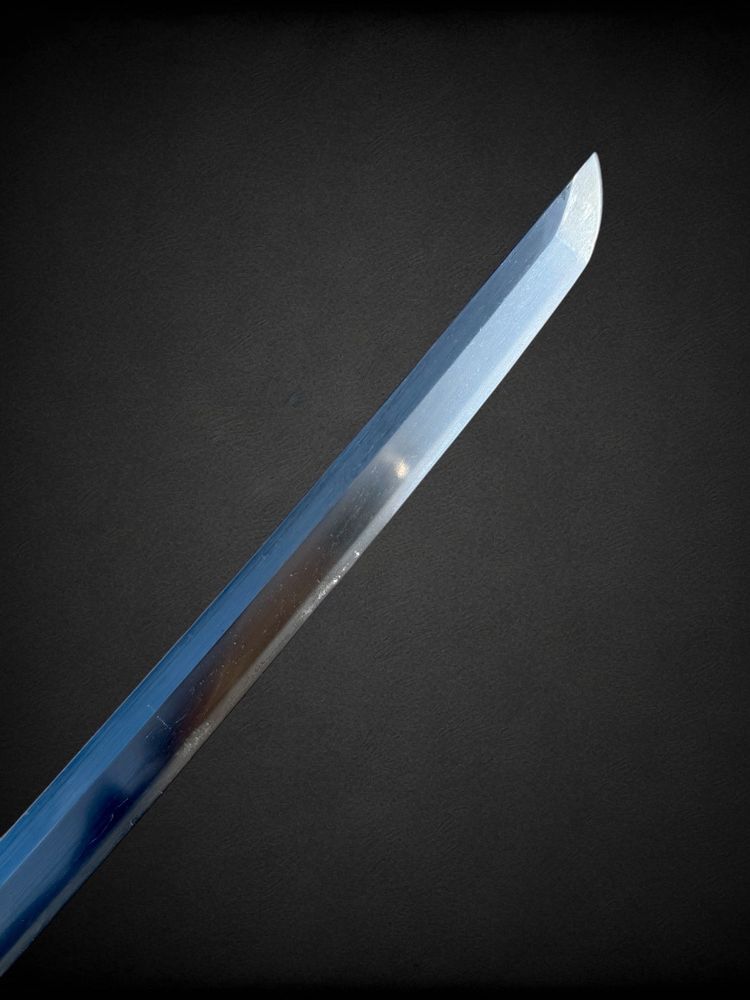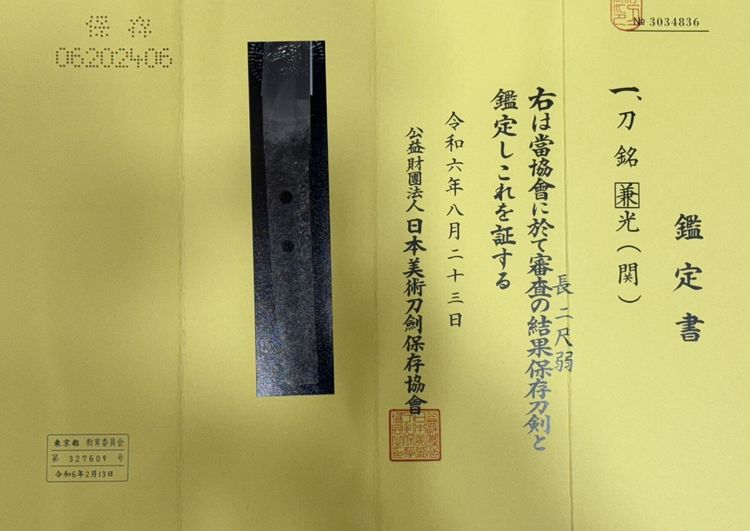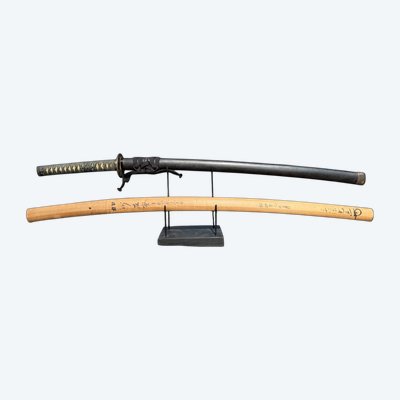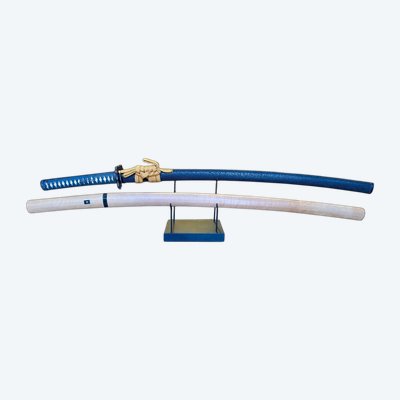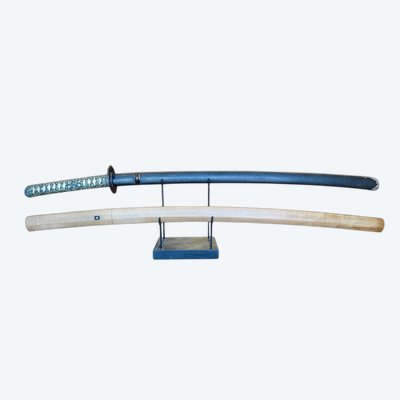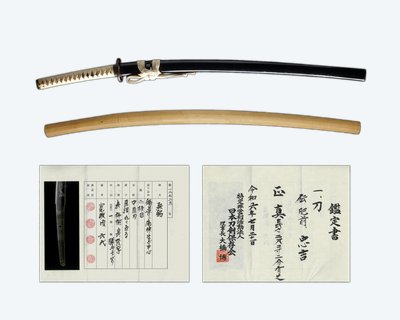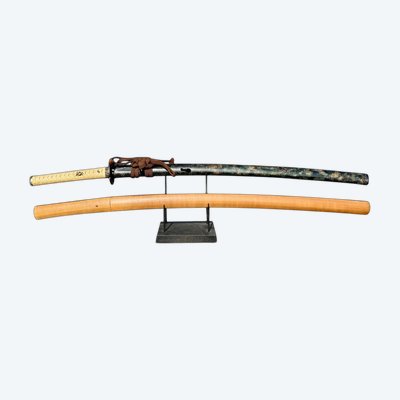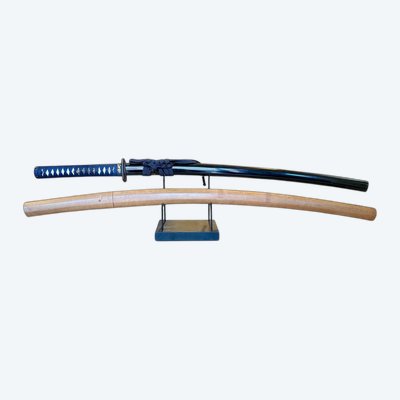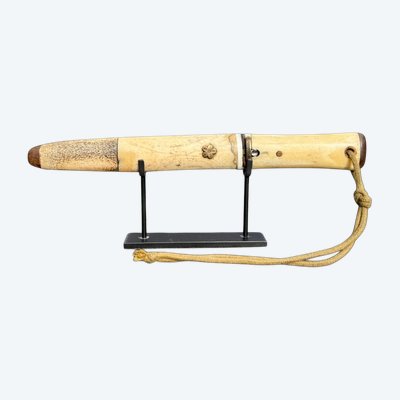This description has been translated and may not be completely accurate. Click here to see the original
JAPAN - Late Muromashi (1st half of the 16th century).1336-1477
Samurai katana.
FUSHI - KASHIRA en suite in copper with black and gold patina.
Wooden TSUKA covered with black-dyed ray skin, braided with leather.
Copper MENUKIS featuring shishis.
TSUBA mokko-gatta in copper embossed with geometric motifs, the mimi in silver, lined with two plates in cut copper.
SAYA in lacquered wood using the Kin-Mushi-kui Nuri technique, with rice husk imprints on black lacquer followed by gold leaf.
HABAKI in copper.
Straight blade, hamon regular, straight and well marked, tang with two holes, signed Kanemitsu. The maker's name, Kanemitsu, lasted several generations from the Nanbokucho-Muromachi period. We believe this blade was made by the late Kanemitsu generation at the end of the Muromachi period (early-mid 16th century), based on its characteristics and valuation.
Kanemitsu lived in the town of Seki, located in Mino province (present-day Gifu prefecture). In Mino province, the town of Seki was the most active sword forge at the time.
First-generation Kanemitsu is said to be the third son ofYamato Tegai Kanenaga(大和手搔包永)and originally resided in Yamato province (now Nara prefecture). Kanemitsu originally signed Kanemitsu but changed his maker's name when he moved to Mino province at the end of the Nanbokucho period.
The blacksmiths who lived in Mino province developed a particular tradition of sword forging called MINO-DEN. Its characteristic feature is TOGARI (pointed shapes protruding from the Hamon) in a classic straight line and a random temper line with a little white Utsuri. MINO-DEN originated with YAMATO-DEN at the end of the KAMAKURA period (1280-1330), flourished during the MUROMACHI period (1333-1573) and continued until the EDO period (1603-1868). MINO-DEN particularly flourished during the Sengoku Jidai (Warring State period) due to the high demand for weapons.
Sold with stand, silk carrying case and NBTHK certificate.
NBTHK, also known as Nihon Bijutsu Touken Hozon Kyokai (the Society for the Preservation of Japanese Art Swords), is one of the oldest organizations for the evaluation of Japanese swords in modern Japan.
Dimensions: 95 x 8 x 7.5 cm.
Edge length: 60.3 cm.
Curvature: 1.3 cm.
Ref: VS2NZUXC0P
 Modular wall shelf in rosewood.
4.800 € EUR
Modular wall shelf in rosewood.
4.800 € EUR

